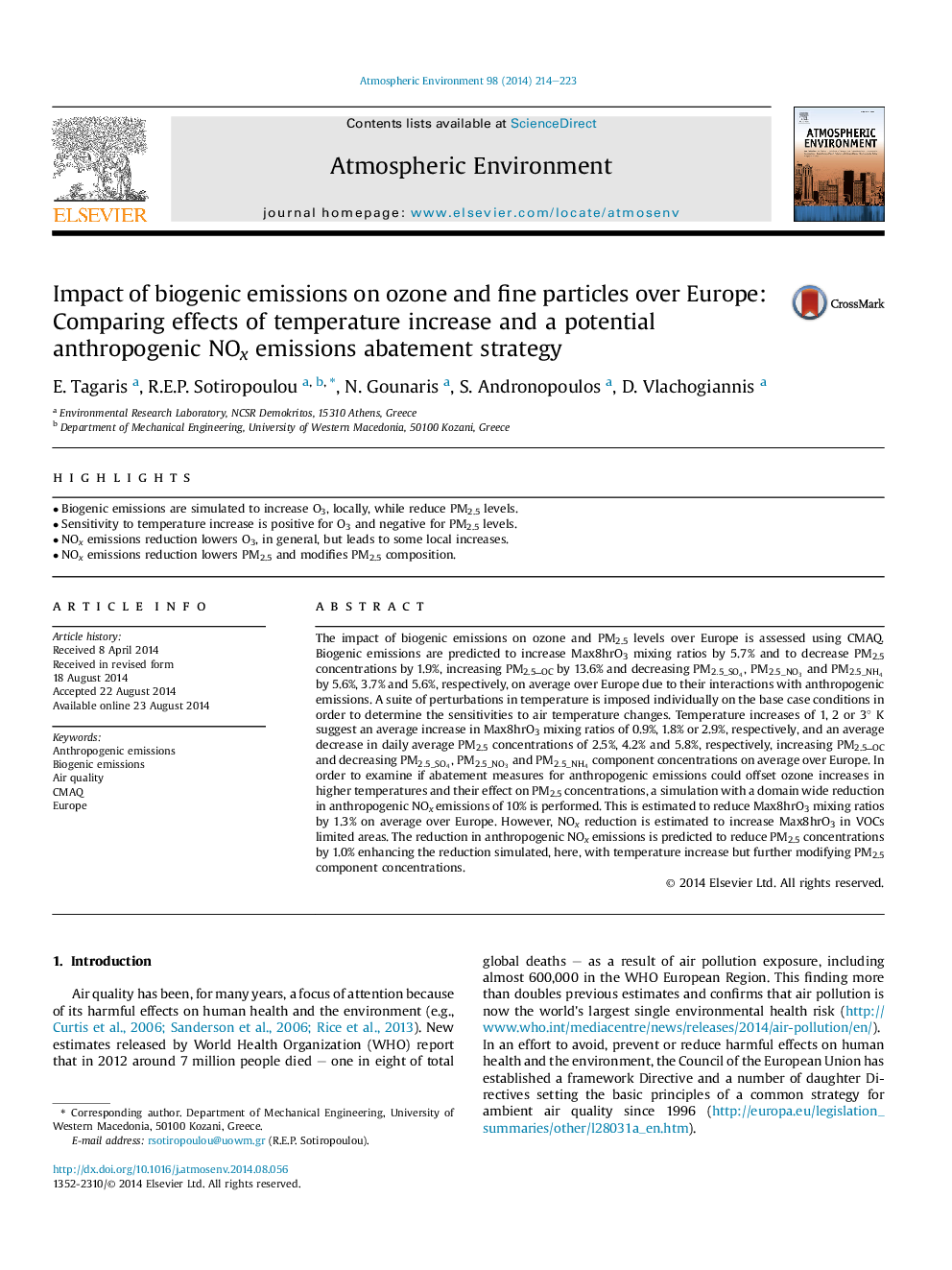| کد مقاله | کد نشریه | سال انتشار | مقاله انگلیسی | نسخه تمام متن |
|---|---|---|---|---|
| 6338930 | 1620373 | 2014 | 10 صفحه PDF | دانلود رایگان |
عنوان انگلیسی مقاله ISI
Impact of biogenic emissions on ozone and fine particles over Europe: Comparing effects of temperature increase and a potential anthropogenic NOx emissions abatement strategy
دانلود مقاله + سفارش ترجمه
دانلود مقاله ISI انگلیسی
رایگان برای ایرانیان
کلمات کلیدی
موضوعات مرتبط
مهندسی و علوم پایه
علوم زمین و سیارات
علم هواشناسی
پیش نمایش صفحه اول مقاله

چکیده انگلیسی
The impact of biogenic emissions on ozone and PM2.5 levels over Europe is assessed using CMAQ. Biogenic emissions are predicted to increase Max8hrO3 mixing ratios by 5.7% and to decrease PM2.5 concentrations by 1.9%, increasing PM2.5_OC by 13.6% and decreasing PM2.5_SO4, PM2.5_NO3 and PM2.5_NH4 by 5.6%, 3.7% and 5.6%, respectively, on average over Europe due to their interactions with anthropogenic emissions. A suite of perturbations in temperature is imposed individually on the base case conditions in order to determine the sensitivities to air temperature changes. Temperature increases of 1, 2 or 3° K suggest an average increase in Max8hrO3 mixing ratios of 0.9%, 1.8% or 2.9%, respectively, and an average decrease in daily average PM2.5 concentrations of 2.5%, 4.2% and 5.8%, respectively, increasing PM2.5_OC and decreasing PM2.5_SO4, PM2.5_NO3 and PM2.5_NH4 component concentrations on average over Europe. In order to examine if abatement measures for anthropogenic emissions could offset ozone increases in higher temperatures and their effect on PM2.5 concentrations, a simulation with a domain wide reduction in anthropogenic NOx emissions of 10% is performed. This is estimated to reduce Max8hrO3 mixing ratios by 1.3% on average over Europe. However, NOx reduction is estimated to increase Max8hrO3 in VOCs limited areas. The reduction in anthropogenic NOx emissions is predicted to reduce PM2.5 concentrations by 1.0% enhancing the reduction simulated, here, with temperature increase but further modifying PM2.5 component concentrations.
ناشر
Database: Elsevier - ScienceDirect (ساینس دایرکت)
Journal: Atmospheric Environment - Volume 98, December 2014, Pages 214-223
Journal: Atmospheric Environment - Volume 98, December 2014, Pages 214-223
نویسندگان
E. Tagaris, R.E.P. Sotiropoulou, N. Gounaris, S. Andronopoulos, D. Vlachogiannis,